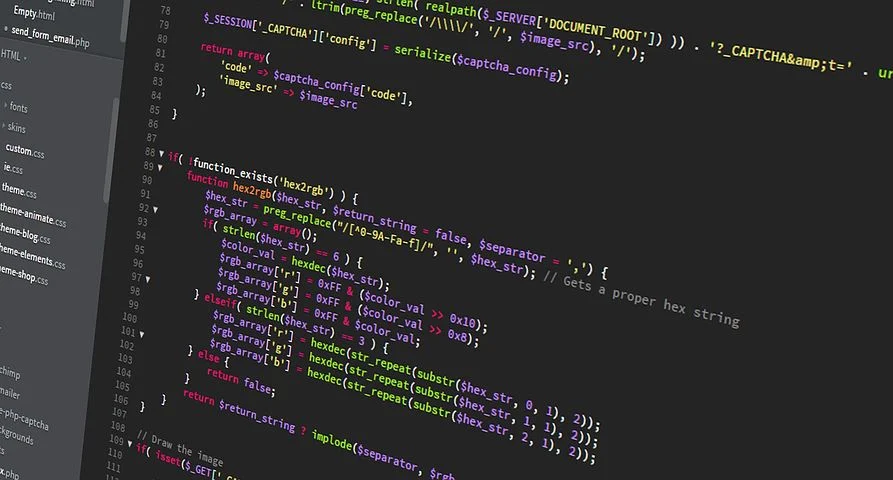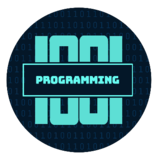70+ Top programming interview Questions & Answers

In this article, I’ll provide some frequently asked programming interview questions from a variety of interviews with programmers of all levels of expertise, ranging from recent college graduates to programmers with one to two years of experience.
Many computer science graduates and programmers apply for programming, coding, and software development jobs at startups like Uber and Netflix, large organizations like Amazon and Google, and service-based companies like Infosys or Luxoft, but many of them have no idea what kind of programming interview questions to expect.
What is computer programming?
One of the most common coding interview questions is whether or not a candidate has any experience with computer programming. The notion of providing instructions to a computer to have it do a certain task is known as computer programming. It entails utilizing computer languages to create specialized algorithms for each instruction. A ‘program’ is a collection of these instructions that may cause the computer to do a certain task.
The computer’s “programmer” will have to write the instructions in any language that the computer can convert to machine-understandable instructions.
What is maintenance of a program?
Following the successful installation of a computer program, the maintenance and upgrading procedure starts. While program maintenance is the ongoing practice of checking for bugs and errors in a computer program, upgrading the computer program include making it better over time with little and large modifications.
How does programming work?
Programming is a collection of instructions for the computer to follow in order to do various jobs. Those instructions are, in reality, executable commands, each with its own function.

What is Compiling?
Compiling is the process of translating high-level languages (like C, Java, and Python) into machine-readable code (binary code) . Every high-level programming language’s software includes a compiler.
When a programmer writes code and runs it, the compiler converts it to 0s and 1s so the machine can comprehend what the programmer is attempting to say.
What is debugging in programming?
Debugging is the process of locating and correcting program faults. The software is extensively examined for faults throughout this procedure. The problems are then identified and debugged.
What is Software Testing?
The process of evaluating whether the final software output meets all of the expected requirements is known as software testing. It is a thorough testing procedure in which every conceivable predicted result is compared to the software code’s generated output. Only when the program has passed all of the many layers of testing will it be released to the public.
What are the different types of errors?
During the execution of a program, there are three sorts of errors that might occur.
Syntax Errors
When a program breaks one or more grammatical rules of the programming language, it is called a syntax error. These mistakes are discovered during compile time, when the translator (compiler or interpreter) tries to translate the program.
Logical errors
When a software implements the incorrect logic, it is called a logical error. For a logical error, the translator (compiler or interpreter) does not issue an error message. These are the most hardest to track down.
Runtime Errors
When a software instructs the computer to do an unlawful operation, such as dividing a number by zero, a runtime error occurs. The only mistakes that appear instantly during the execution of a program are runtime errors. When certain mistakes occur, the computer will halt the programming and show a diagnostic message to assist in finding the problem.
What is algorithm?
A limited collection of steps that, when followed, perform a certain job is referred to as an algorithm. An algorithm must be simple, concise, and efficient.
What is flowchart?
The flowchart is a visual depiction of a program that helps in the comprehension of the algorithm’s control and data flow.
What are Variables?
One of the most essential coding interview questions that an interviewer may ask is about variables. Variables are the names given to the data that is stored in a memory region by a program. A word, a letter, or a string of words with no space between them can all be used as variables in a program.
Other than letters, the underscore (_) is the only character that may be used in variables. As variables, all other special characters are invalid. A variable’s letters might be a mix of capital and tiny characters, as desired by the programmer.
What are local variables and global variables?
Global variables are variables that are declared outside of all functional blocks of a program. They may be found throughout the software in all of the various functional blocks. Various values can be set to the same global variable in different functional blocks of the application.
Local variables are variables that are defined within a functional block. Access to such variables is limited to the functional block in question.
What are reserved words?
Reserved words, often known as keywords, are words with predetermined meanings. They have specified functions and cannot be used or redefined in a programming language for any other reason.
For example :
- import
- If
- Else
- While
- Then
- def
- Class
What types of data are used in coding?

One of the most common programming interview questions is about data types. Depending on the kind of data supplied to that variable, each variable in a program is allocated a certain data type. If the data is a number, it will be classified as a ‘int’ datatype. Similarly, ‘string’ is for letters, ‘char’ is for words, ‘bool’ is for Boolean true and false, ‘float’ is for decimals, and so on.
In certain programming languages, such as C, the data type must be specified when declaring variables. Other programming languages, such as Python, determine the data type based on the kind of data supplied to the variable.
What are operators?
Operators are characters that specify the type of operation that will be performed between two or more variables or numbers. Mathematical operators, logical operators, conditional operators, relational operators, Boolean operators, and more types of operators ,etc .
Mathematical operations such as addition, subtraction, multiplication, and division are carried out with the help of mathematical operators (+. -. *,…).
Logical operators, such as AND, OR, and others, are used to execute logical operations.
Conditional or relational operators (==, >, >=, =, etc.) are used to compare two variables to see if they are equal to, greater than, or less than one another.
Define Operators
Operators are symbols that are used to carry out certain operations on data. There are arithmetic, relational, logical, and assignment operators among them.
What is the purpose of arithmetic operations?
To execute arithmetic operations on values, arithmetic operators are employed (numbers).
What is the purpose of relational operators?
When comparing two values, relational operators are employed. These operations always return true or false. They always yield a non-zero result (in most case 1).
What is the purpose of logical operators?
Logical operators, which include AND, OR, and NOT, are used to execute logical operations.
What is the purpose of assignments operators?
To assign a value to a property or variable, use the Assignment Operator. Numeric, date, system, time, and text assignment operators are all possible.
What are loops?
The loop is a structure that may repeat a collection of statements for a certain number of times or until a specific condition is met.
What are the various types of Loops?
A loop is a set of instructions that keeps repeating until a certain condition is met. Based on the location of the condition statement, loops are categorized into three types: ‘for loops,’ ‘while loops,’ and ‘do-while loops.’
Entry-controlled loops are for and while loops. As a result, if the condition is not true the first time, the control will never enter the loop. On the opposite side, the do-while loop is exit-controlled. As a result, the control enters the loop for the first time, and then repeats the loop for the second time only if the provided condition is met.
What is the use of for Loop?
When the number of times the loop must be performed is known in advance, the FOR… NEXT Loop The most efficient choice. FOR… NEXT Loop is used to repeat a collection of statements a predetermined number of times.
What is the use of While Loop?
The While loop iterates across an action until an associated condition is met. This is useful when the programmer does not know how many times the loop will be run in advance.
What is the use of Nested Loop?
The term “nested loop” refers to a loop within a loop.
What is Documentation?
The written description of an algorithm(s), coding process, design, testing, and appropriate usage of a computer program is referred to as program documentation. It is useful for individuals who use the software on a daily basis as well as the programmer(s) who are responsible for correcting, modifying, and updating the computer program.
For a serious coder, reliable documentation is essential. The provision of detailed documentation helps not just in keeping track of the different features of a computer application, but also in enhancing its overall quality. Development, maintenance, and knowledge transfer to other developers are the primary goals of software documentation.
What is the working of a compiler?
A compiler is a one-of-a-kind program that can interpret statements expressed in a certain programming language and convert them to machine language or “code.” This is how a compiler works. The compiler does not compress anything… Please refer me to a link that states so.
What are constants?
A constant is a programming item whose value cannot be changed or updated while the program is being executed.
What are the types of constants?
Constants are of two main types:
- Numeric Constants
- String Constants
Define Numeric constants
Integers, single-precision numbers, and double-precision numbers are examples of numerical constants. Integer constants are values that may be counted but do not have a fractional portion, for example, +56, -678.
Define String constants.
A string constant is a string of alphanumeric letters surrounded by double quotation marks. A string constant can have a maximum length of 255 characters.
What are arrays?
An array is a form of data structure in which a single variable can be given numerous memory addresses. This variable can be assigned to several data items of the same data type, each of which is stored in a different memory address.
Can you explain the memory allocation of a dynamic array?
Memory for a dynamic array is allocated during the program’s execution. As a result, the size of the dynamic array does not need to be stated while creating the program. The size of the dynamic array is continually changed throughout the program’s runtime based on how many items are added and removed during the program.
Can you explain multi-dimensional array?
In a conventional array, there is only one index. An array with many indexes is known as a multi-dimensional array. When single-dimensional indexing isn’t enough, it’s utilized.
What is subroutine?
A subroutine is a self-contained collection of statements that may be called from anywhere in a program. The subroutine completes its work and then returns control to the program that called it.
What is the difference between a function and a subroutine?
A value is returned to the procedure that called the function in functions. A sub-routine is more like running a collection of statements; no value is returned when the sub-routine is invoked.
Define Low-level programming language
A low-level programming language is a programming language that does not provide any generalization from the computer’s “instruction set architecture.” It generally refers to assembly language or machine code.
Define High-Level programming language
A high-level programming language in computer programming is a programming language that enables high generalization from the machine’s “instruction set architecture.” It may employ natural language components to make program creation easier than with a low-level programming language.
What is pointers in programming?
In programming, pointers are variables or structures that keep track of the addresses of other variables. As a reference for items in dynamic memory allocation, these pointers are quite useful.
What is reliability?
It is the proper operation of software over a period of time. A program isn’t reliable if it doesn’t work properly for the specified amount of time.
What is machine code?

A microprocessor can read and process machine code. There is no need to alter anything beforehand. Machine code is never used to write programs.
What Is Object-Oriented Programming?
Object-Oriented Programming (OOP) is a practical approach to software development in which anything that exists physically is considered a program object. Every object can have its own set of characteristics that can be used to access it.
OOPs, based languages can hence break down any software into objects so that the programmer can design and deal with one object at a time.
What are OOPs based programming languages?
- Java
- C++
- Ruby
- .Net
- JavaScript
- PHP
- Scala
What is modeling language?
An artificial language that can be used to express information, knowledge, or systems in a way that is specified by a set of rules that can be relied upon. These principles are also used to interpret the meaning of the structure’s components.
Name some modeling languages
- Flowchart
- EXPRESS
- BPMN
- System language
- Jackson Structured
- Extended Enterprise
What is software testing?
In the software testing process, the program is put through its paces in order to determine its quality. Another key reason to test a computer software is to see if it succeeds in providing a positive user experience.
Why do we need software testing?
Software testing, like programming, is an integral part of any software development life cycle model, whether classic waterfall or contemporary Rapid Application Development (RAD).Some other reasons include:
- Meeting the needs of the users
- Ensure that everything is operating as it should.
- Checking for improvements
- Can be implemented in the same way.
What is Beta version?
A beta version of software is one that is not yet ready for public release and can be updated based on user feedback. The beta version follows the alpha version.
What is the top-down design approach?
A technique for assessing software is the top-down design approach. Instead than treating an issue as a whole, it is first broken down into smaller chunks. The problems are then solved one by one. The best solution is then created by combining the solutions.
What is analyzing a program?
The process of breaking down a program into smaller parts. We try to address each sub-issue independently rather than concentrate on the larger problem as a whole. This leads to a straightforward solution. Top-down design is another name for this method.
What are commands?
Commands are a type of executable instruction that is used in the direct mode. They don’t need a line number before them. Inaccurate information.
What is the meaning of implementation of a program?
The software must be installed or put into action at the place where it will be utilized after it has been properly tested. This is referred to as program implementation.
What are data structures?
The many ways in which data may be arranged and stored inside the memory so that actions on the data can be done most effectively are known as data structures. Every form of data structure has a distinct style that is tailored to its intended use. The style varies depending on how data may be entered, removed, or sorted inside the data structures.
What is the difference between a linear and a non-linear data structure?
Data elements in a linear data structure are arranged next to each other. Linear data structures include arrays, linked lists, queues, and stacks.
It is possible for data components to be linked to more than two data elements in a non-linear data structure. Graphs and trees are examples of non-linear data structures.
What is LIFO Structure?
Last-in-first-out (LIFO) is an acronym for last-in-first-out. The LIFO idea is used to create stack-type data structures. One piece at a time can be pushed into the stack data structure, and they are stacked on top of one another so that the last thing pushed inside is the first to come out. As a result, this structure is known as a LIFO structure, since the piece that was last added to the stack is the first one to be removed.
What is a graph?
A graph is a form of data structure that consists of a set of ordered pairings. Arcs or edges are other names for these ordered pairings. They’re used to link nodes, which are the places where data is stored and accessed.
What are Singly Linked Lists?
Singly Linked Lists are unidirectional linked lists, meaning they can only be traversed in one way, from the first (head) to the final (tail) node (tail). In Singly Linked Lists, travelling from tail to head is not feasible.
explain data abstraction
Data abstraction is a technique for breaking down a large data problem into smaller, more manageable chunks. The initial data objects and actions to be performed on them are described after data abstraction. It becomes a secondary duty to figure out how the data objects will be kept in memory.
What are numeric variables?
Number variables are variables that can hold numerical values. Floating point numbers and whole numbers are both examples of numerical values.
What are string variables?
A string is a collection of characters wrapped in double quotation marks. As a result, a string variable may store a succession of characters. Character strings are not the same as numeric values in terms of their essence.
Why do we use Huffman’s algorithm?
We utilize Huffman’s technique to expand binary trees with the shortest weighted path length from provided weights. It makes use of a table that lists the total number of times each data piece has been used.
Mention the types of sorting algorithms
- Bubble Sort
- Bucket sort
- Insertion sort
- Merge sort
- Quick Sort
- Radix Sort
- Selection Sort
What is a Bubble Sort Algorithm?
It’s a simple sorting method for linear data structures like queues and linked lists. If two neighboring items are not in order, this sorting method compares them and swaps them (sorts them). As only two components may be compared at a time, this takes time.
What is an Insertion Sort Algorithm?
The insertion sort method is analogous to sorting a deck of cards from Ace to King.
How to implement an Insertion Sort Algorithm?
The first element is initially compared to its neighboring element. If the comparison indicates that the first element must go after the second, then space is produced after the second element, and the first element is now inserted into that space. The element in this new space is now compared to the third element, and the procedure is repeated until all of the elements have been properly sorted.
What is a Merge Sort Algorithm?
Merge sort is a recursive method in which the input array is divided into two halves, each of which is further divided into two halves, and so on until all of the items are sorted and then merged.
What is a bucket Sort Algorithm?
When the data structure’s inputs are equally spread throughout a range or when some inputs contain floating-point values, the bucket sort method is commonly employed.
How does the recursive algorithm works?
The recursive method breaks down an issue into smaller, more manageable chunks. After processing one sub-problem, the output of one recursion becomes the input for the next recursive process.
What is the execution of a program?
The term “execution of the program” refers to the process of carrying out the program’s instructions. Before it can be executed, the program must be loaded into memory (RAM).
What is a recursive function?
A recursive function is a function that calls itself. It utilizes a stack and is based on a terminating condition. Recursion is the term for this occurrence.
What is binary search?
The binary search works best on a list where all of the entries have previously been sorted. The binary search begins by looking for items in the middle of the list.If the middle element isn’t the one you’re looking for, it moves on to the lower half or higher half of the list. The procedure is repeated until the required element is discovered.
Explain Fibonacci search
The Fibonacci search algorithm is a form of search method that works with sorted arrays. It employs a divide-and-conquer strategy to drastically reduce the time it takes to reach the target element.
Interview Questions on Basics of Database

A candidate will come across numerous Database Management questions when attempting to answer programming interview questions, some of which are:
- What is database?
- What is RDBMS?
- What is SQL?
Answers to questions related to Databases can be found in this article in detail , learn more.
Conclusion
This concludes our collection of programming interview questions that every aspiring programmer should be familiar with, and these questions will assist you in passing technical interviews. If you encounter any additional issues during the interview that are not listed here, please let us know and we will add them to the list. Best wishes!
